Tier 2 Targeted Prevention
On Demand Webinars:
Developed by Occupational Therapists, implemented by all!
Learn practical tools and strategies for positive mental health outcomes in your classroom, school, or community. Unlock instant savings when you purchase for a group or bundle multiple webinars together.
Downloads:

Tier 2: Mental Health Prevention
Targeted Embedded Strategies for SOME
Targeted interventions (Tier 2) for mental health prevention are designed to support students who are at risk for developing mental health challenges or who are showing early signs of not doing well emotionally. Mental health is a dynamic state of functioning that can vary throughout a person’s life based on biological, environmental, and situational factors.1 Early identification and intervention is critical at this point in order to prevent emotional challenges from becoming more severe.2 Intervention at this level focuses on modifying the environment to foster success, embedded strategies to reduce symptoms and foster emotional well-being, and small activity groups to promote successful participation.

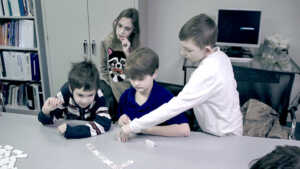 Be observant!
Be observant!
Pay special attention to the mental health needs of students at-risk.
There are numerous factors that place students at risk of developing mental health challenges. Some of these include:
- Situational stressors (friendship challenges, taking a test, academic struggles, natural disasters)
- Physical and/or developmental disabilities, for example ADHD, autism, and cerebral palsy. Those with disabilities may struggle due to chronic daily stress or low self-esteem. Children with disabilities are at higher risk of being bullied. Some have a higher incidence of mental health challenges associated with the diagnosis (e.g. higher incidence of anxiety in those with ADHD and autism).
- Living in poverty (due to chronic stress and limited access to healthy activities)
- Trauma (violence in the home, parent with a mental illness or substance use disorder, living through a natural disaster)
- Experiencing loss and grieving (e.g. loss of a family member, friend, or pet; parental divorce)
- Bullying (acts of physical or verbal aggression, cyber-bullying)
- Overweight or obese (higher incidence of self-esteem issues and depression)
- Genetic predisposition to mental illness (e.g. family history of depression or anxiety)
Tune into early signs that a student may be struggling emotionally.
Tier 2 services are also geared toward students demonstrating early signs of not doing well emotionally. Students at this level are generally not identified as needing special education and/or mental health services, but can benefit early identification and supports.2
 What you can do?
What you can do?
Be knowledgeable.
Learn about early signs of a variety of mental health problems (e.g., depression, anxiety, obsessive–compulsive disorder, schizophrenia) and how such symptoms might manifest themselves in school settings. The purpose is not to diagnose, but to be aware of signs and symptoms that a student may not be doing well emotionally.
Free resources:
Minnesota Association for Children’s Mental – Mental Health Fact Sheets. These 2-page fact sheets provide useful information about common mental disorders (e.g. anxiety, depression, ADHD)  and practical classroom strategies for helping students succeed in school. To download these fact sheets, refer to the Publications tab and sign up to receive free copies. An Educators Guide to Children's Mental Health and Children's Mental Health Classroom Activities are publications available for purchase under Publications. Website: www.macmh.org
and practical classroom strategies for helping students succeed in school. To download these fact sheets, refer to the Publications tab and sign up to receive free copies. An Educators Guide to Children's Mental Health and Children's Mental Health Classroom Activities are publications available for purchase under Publications. Website: www.macmh.org
American Occupational Therapy Association’s (AOTA) – School  Mental Health toolkit. This is a compilation of information sheets on issues related to mental health such as common disorders (e.g. anxiety), factors that place children at-risk (grieving & loss, obesity, bullying), and environmental stressors (e.g. trauma, cafeteria issues). Each information sheet provides how the issue impacts participation and strategies for mental health promotion, prevention, and intervention. Website: www.aota.org
Mental Health toolkit. This is a compilation of information sheets on issues related to mental health such as common disorders (e.g. anxiety), factors that place children at-risk (grieving & loss, obesity, bullying), and environmental stressors (e.g. trauma, cafeteria issues). Each information sheet provides how the issue impacts participation and strategies for mental health promotion, prevention, and intervention. Website: www.aota.org
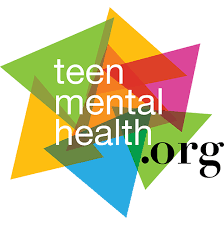 Teenmentalhealth.org – This website is committed to providing high quality mental health literacy information, research, education, and resources for educators, teens, and parents. Learn about the Mental Health & High School Curriculum Guide (version 3, 2017) by Kutcher & Wei which is being used in Canada and Washington state. This guide provides information for teachers on how to implement a comprehensive, system-wide approach to teaching mental health literacy as a part of the health curriculum. As of 2020, the guide is free and downloadable on the teenmentalhealth.org website. Information included: positive mental health, symptoms of mental disorders, reducing symptoms, and promoting help-seeking behavior. Research has demonstrated that the 6 week program was effective in improving mental health knowledge and attitudes toward mental illness.3 Website: www.teenmentalhealth.org
Teenmentalhealth.org – This website is committed to providing high quality mental health literacy information, research, education, and resources for educators, teens, and parents. Learn about the Mental Health & High School Curriculum Guide (version 3, 2017) by Kutcher & Wei which is being used in Canada and Washington state. This guide provides information for teachers on how to implement a comprehensive, system-wide approach to teaching mental health literacy as a part of the health curriculum. As of 2020, the guide is free and downloadable on the teenmentalhealth.org website. Information included: positive mental health, symptoms of mental disorders, reducing symptoms, and promoting help-seeking behavior. Research has demonstrated that the 6 week program was effective in improving mental health knowledge and attitudes toward mental illness.3 Website: www.teenmentalhealth.org
What you can do?
As you interact with all students throughout the day, tune into their thinking, behavior, and mood. Be aware of subtle and or sudden changes, such as:
- Academics – drop in grades, difficulty concentrating, poor participation, difficulty completing work
- Mood – lethargy; moody; looking sad, troubled, or anxious
- Social interaction – withdrawal from friends; irritability with peers
- Activities of daily living - loss of appetite, sleep issues, changes in grooming
 Make it your business! If you note concerning changes, talk with the appropriate school personnel about your observations. Find out the correct procedures in your school for sharing concerns. This most likely will be your school’s counselor, school psychologist, mental health provider, or principal. Since there are generally only 1-3 mental health providers in a given school, it is critical that all school personnel be vigilant in observing how students are doing emotionally.
Make it your business! If you note concerning changes, talk with the appropriate school personnel about your observations. Find out the correct procedures in your school for sharing concerns. This most likely will be your school’s counselor, school psychologist, mental health provider, or principal. Since there are generally only 1-3 mental health providers in a given school, it is critical that all school personnel be vigilant in observing how students are doing emotionally.
Tier 2 strategies focus on prevention – on reducing the incidence and seriousness of mental health disorders. This is accomplished by reducing risk factors and enhancing protective factors.
What you can do?
Reduce risks and enhance protective factors.
Reducing risks:
- Bully prevention – Tune into students who may be bullied, in either directly (physical aggression, hurtful teasing) or indirectly (through gossip, being excluded from a group). Make a point to be present in areas where bullying tends to be prevalent (e.g. unstructured times of the day like lunch, recess, and hallways). Share bully prevention resources and/or join school-wide bully prevention committees.4 Check out the AOTA information sheet on Bullying Prevention and Friendship Promotion. The PBIS Bully Prevention Manual is also helpful (elementary level).
- Family stress and poverty – Tune into students who may be living in stressful family situations and/or poverty. Reach out to school counselors, occupational therapists, and principals to raise awareness and seek supports (e.g. free breakfasts, school counseling). Learn how to embed trauma informed care (TIC) strategies.
- Stressful school environments – Tune into times and places during the day that may be stressful and chaotic such as during lunch in the cafeteria, recess, or even transition between classes. Learn about active supervision and Positive Behavioral Interventions & Supports (PBIS) and other strategies for preventing problem behavior.
Enhancing protective factors:
Character strengths, coping strategies, participation in enjoyable activities, and environmental supports can serve as important "buffers" in the prevention of mental health challenges and promotion of positive mental health.
- Social and emotional learning (SEL) – Many states have Social and Emotional Learning (SEL) academic standards as a part of the general education curriculum from K – 12 that helps students recognize and talk about their feelings, think about how feelings impact behavior, and modify behavior. Learn about how your school is promoting SEL and help all students, especially those at-risk, to talk about their feelings and impact on behavior. Refer to CASEL (Collaborative for Academic, Social, and Emotional Learning).
- Self-regulation and coping strategies – Students at-risk of or showing early signs of mental health challenges benefit from learning how to self-regulate their levels of alertness by using thinking and sensory strategies. The Zones of Regulation ®, developed by occupational therapist Leah Kuypers, is a cognitive behavioral framework used to teach children to self-regulate their emotions and impulses in order to feel good and succeed academically and socially. This curriculum has been used heavily throughout the US at the universal (whole school), targeted (small group), and individual levels.5 The Calm Moments Cards program can also be used to reduce anxiety during situational stressors and enhance emotional well-being using thinking (cognitive behavioral), focusing and calming (mindfulness and yoga), and sensory strategies.
 Positive social relationships and friendships – All school personnel need to interact with students in positive and supportive ways (e.g. taking an interest in students’ lives and making a point to call them by name). It is also important to help those at-risk to develop and maintain friendships. Students who have at least one good friend are less likely to be bullied. Refer to the friendship materials (week 2) for the Comfortable Cafeteria and Refreshing Recess programs.
Positive social relationships and friendships – All school personnel need to interact with students in positive and supportive ways (e.g. taking an interest in students’ lives and making a point to call them by name). It is also important to help those at-risk to develop and maintain friendships. Students who have at least one good friend are less likely to be bullied. Refer to the friendship materials (week 2) for the Comfortable Cafeteria and Refreshing Recess programs.- Participation in enjoyable activities that align with character strengths – One of the best strategies for helping children and youth feel better emotionally is to make a point of identifying their unique strengths (e.g. creativity, humor, kindness), point them out, and help them use the strengths in activities throughout the day. Students who live in poverty, for example, may not have opportunities to develop healthy hobbies and interests after school. Collaborate with the team and the student to identify feasible opportunities to be exposed to and participate in enjoyable activities. Refer to Making Leisure Matter.
What can be provided?
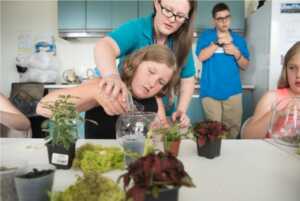
Students at-risk of or demonstrating early signs of mental health challenges are generally not eligible for special education under IDEA (Individuals with Disabilities Education Act) unless the student has a co-morbid disability that qualifies them for services. However, general education students at-risk of or demonstrating behavioral or learning difficulties because of mental health challenges may be provided "coordinated early intervening services" according to IDEA. Another way in which services can be offered is through Section 504 of the Rehabilitation Act of 1973. For many students with mild mental disorders, 504 accommodations are sufficient for enhancing school functioning. At this level, close collaboration among all school personnel and mental health providers to develop and co-facilitate targeted interventions is essential. When integrating services in natural school contexts, related service providers (OTs, SLPs, PTs, school counselors), can embed strategies to promote mental health within a whole class or in small groups in order to benefit students at-risk for mental health challenges.
Embedding mental health promotion and prevention strategies at Tier 2 may be implemented by providing:
- Accommodations in order to modify learning demands and academic routines to foster successful participation and promote positive psychological functioning. For students with anxiety, reasonable accommodations may include breaking down school assignments and giving one part at a time, teaching relaxation strategies, and giving extra time to complete tests and assignments.6
- Small group interventions during lunch, recess, or after-school can be used to promote social skills, friendships, hobbies and interests, and mental health promotion. Related service providers (e.g. OT, PT, SLP, school counselors) may co-lead small integrated groups including special education students and those who are at-risk for developing mental health challenges. Lunch bunch groups might focus on social interaction, respecting differences, and inclusion. For low-income urban youth, small activity-based groups focusing on SEL and mental health promotion have been shown to enhance positive emotions, group cohesion, and healthy leisure.7
 Co-teaching involves two or more school providers providing instruction. Occupational therapy practitioners, for example, might co-teach The Zones of Regulation with the school counselor or the special education teacher. In this way, all students in the classroom learn self-regulation strategies, not just those who may be struggling emotionally. A recess group focusing on yoga and mindfulness might be co-taught by the OT and PT.
Co-teaching involves two or more school providers providing instruction. Occupational therapy practitioners, for example, might co-teach The Zones of Regulation with the school counselor or the special education teacher. In this way, all students in the classroom learn self-regulation strategies, not just those who may be struggling emotionally. A recess group focusing on yoga and mindfulness might be co-taught by the OT and PT.
1 Barry, M. M., & Jenkins, R. (2007). Implementing mental health promotion. Edinburgh, Scotland: Churchill Livingstone/Elsevier. 2Bazyk, S. (2019). Occupational therapy’s role in school mental health. In C. Brown, V. Stoffel, & Munoz, J. (eds.) Occupational Therapy in Mental Health: A Vision for Participation. F. A. Davis. 3Milin, R. et al. (2016). Impact of a mental health curriculum on knowledge and stigma among high school students: A randomized controlled trial. Journal of the American Academy of Child and Adolescent Psychiatry, 55(5), 383-391. 4 Ross, S., Horner, R., & Stiller, B. (2012). Bully Prevention Manual: Elementary School Level; Bully Prevention Manual: Middle School Level. OSEP Technical Assistance Center on PBIS (free downloadable manuals) http://www.pbis.org 5Kuypers, L., (2011). The Zones of Regulation: A curriculum designed to foster self-regulation and emotional control. Social Thinking Publishing Forum, The George Washington University. 6Moran, K. (2016). Anxiety in the classroom: Implications for middle school teachers. Middle School Journal, 47(1), 27-32. 7 Bazyk, S. & Bazyk, J. (2009). Meaning of occupation-based groups for low income urban youth attending afterschool care. American Journal of Occupational Therapy, 63, 69-83.

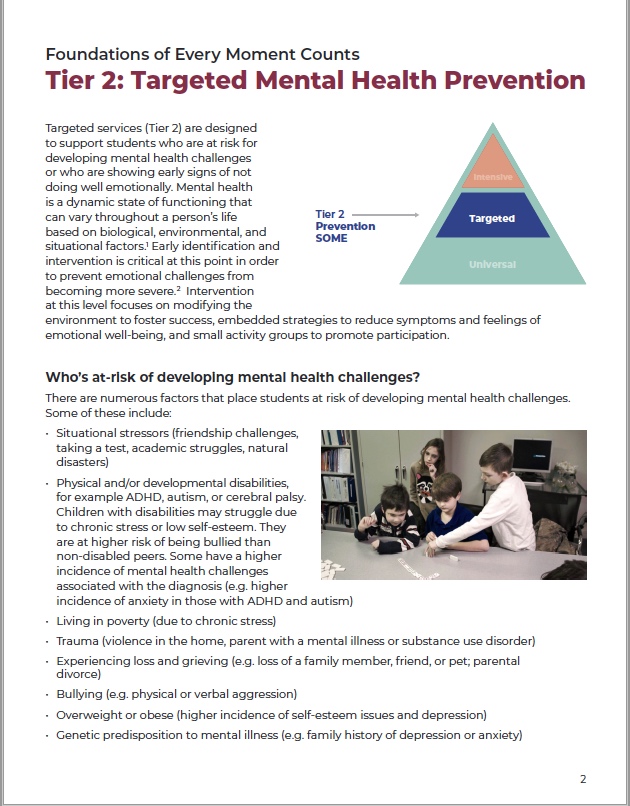
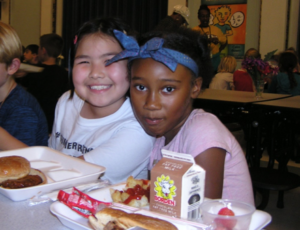 Positive social relationships and friendships – All school personnel need to interact with students in positive and supportive ways (e.g. taking an interest in students’ lives and making a point to call them by name). It is also important to help those at-risk to develop and maintain friendships. Students who have at least one good friend are less likely to be bullied. Refer to the friendship materials (week 2) for the
Positive social relationships and friendships – All school personnel need to interact with students in positive and supportive ways (e.g. taking an interest in students’ lives and making a point to call them by name). It is also important to help those at-risk to develop and maintain friendships. Students who have at least one good friend are less likely to be bullied. Refer to the friendship materials (week 2) for the 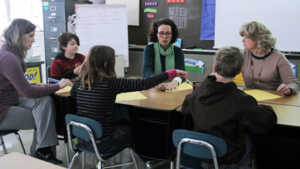 Co-teaching involves two or more school providers providing instruction. Occupational therapy practitioners, for example, might co-teach The Zones of Regulation with the school counselor or the special education teacher. In this way, all students in the classroom learn self-regulation strategies, not just those who may be struggling emotionally. A recess group focusing on yoga and mindfulness might be co-taught by the OT and PT.
Co-teaching involves two or more school providers providing instruction. Occupational therapy practitioners, for example, might co-teach The Zones of Regulation with the school counselor or the special education teacher. In this way, all students in the classroom learn self-regulation strategies, not just those who may be struggling emotionally. A recess group focusing on yoga and mindfulness might be co-taught by the OT and PT.